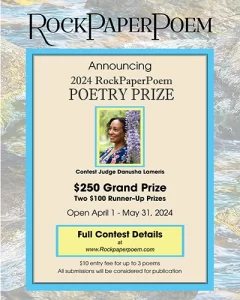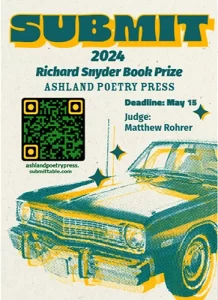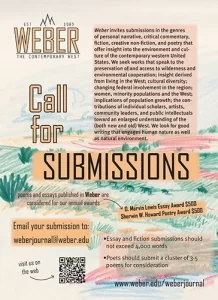Alaska Quarterly Review – Spring/Summer 2012
Volume 29 Numbers 1 & 2
Spring/Summer 2012
Biannual
Julie J. Nichols
Given my interests, while there is much to be said for the literary content of this publication, the focus on this review will be on the photography in this thirtieth anniversary issue: a special section consisting of 141 stunning glossy pages of photographs and brief essays commemorating “Liberty and Justice (For All): A Global Photo Mosaic.” From guest editor Benjamin J. Spatz’s introduction to the project:
Given my interests, while there is much to be said for the literary content of this publication, the focus on this review will be on the photography in this thirtieth anniversary issue: a special section consisting of 141 stunning glossy pages of photographs and brief essays commemorating “Liberty and Justice (For All): A Global Photo Mosaic.” From guest editor Benjamin J. Spatz’s introduction to the project:
The 68 contributors, among them many of the world’s leading photojournalists, were asked to select one image that speaks to their sense of the theme and to pair that image with a brief narrative . . . Taken together, their words and images create a tapestry of the varied nature of liberty and justice that coalesce to explore something more fundamental: the pursuit and importance of truth.
He goes on to say that the project was inspired by the lives of photojournalists Tim Hetherington and Chris Hondros, who were killed while covering the war on Libya. He said they were “men who pushed boundaries and reshaped the landscape of visual communication.”
Some of the subjects in the photographs are a middle-aged Iowan couple who are both crossing their arms and pursing their lips in frustration as they await a tardy candidate’s appearance at a town hall meeting in 2011 (Brendan Hoffman); a ten-year-old Rwandan girl in pink mushanana, squatting among firewood scraps and singing, while her family gathers fuel from their refugee camp in the midst of the genocide, in 1994 (Yunghi Kim); two refugee brothers, one of them desperately ill, posing for the photographer’s revealing shot in Bangladesh in 2009 (Gielse Duley); four hauntingly-beautiful tourist boats on the teal-blue Dal Lake in Srinagar, filled with grim-faced, camouflage-wearing soldiers “guarding” the border in 2003 (Ami Vitale); and a lone cellist, her head wrapped in traditional gear, practicing for the only symphony orchestra in Central Africa as she sits behind a green fence in a rough Kinshasa neighborhood in the Democratic Republic of Congo (Andrew McConnell).
The images cover all continents, many decades, and a great and terrible range of violations of global liberty or justice. In these pages are child soldiers from Liberia and the DRC; grieving war widows; silenced female singers of Muslim nations; rioters protesting oppression in Iraq, Egypt, and China; members of outcast sects in America and Spain; East Indian slaves; victims of water and weather-related inequities in Africa, India, and the United States; and, finally, some remarkable images of dignity, beauty, and hope in the midst of brutality and subjection. These last include a seven-year-old African girl whose right arm has been slashed off by terrorists of the civil war in Sierra Leone. She is shown wrapped in the embrace of an anonymous helper in a boat behind which is the blurry shape of the Statue of Liberty. On her way to receive a prosthesis and a new family in America, the dreadlocked child flings her left arm to the sky in imitation of La liberte. Like all the rest, this image is accompanied by a fervent passage from the photographer, Carol Guzy: “[This child] is a radiant example of the good that can be accomplished by the small acts of a few compassionate people who are determined to make a difference.”
On the previous page is a head shot of a lovely Saigonese woman at age eighteen, with short, dark hair and parted lips (she is now in her forties, the accompanying paragraphs say) taken by photographer David Hartman. Alongside the dozens of other photographs and narratives here, Cat Tuong Nguyen’s story of determination and ultimate success in the United States, following a solo escape as a preteen child from the country of her birth, leaves, at least, this American reader moved and humbled. Hartman says, “Too many of us who are born in America take our freedoms and opportunities for granted.” This may be a cliché spouted over U.S. children forever, but the images in this issue of AQR drive the truth of it home. The world is full of human suffering. If we can see it and say it, we can help to overcome it.
In addition to the powerful photo-and-essay feature, this thirtieth-anniversary issue of AQR includes 5 works of fiction, and poems by 22 poets. In Viet Dinh’s short story, “Good Neighbors,” the young protagonist blurs the distinction between hauntings by ghosts and hauntings by ignorance and bias.
Sarah Blackman’s experimental “The Dinner Party” recalls Virginia Woolf’s Mrs. Dalloway in a postmodern, point-of-view-play kind of way. Kathleen Flenniken’s “November Tritina” exemplifies the overall excellence of the poems included in this issue: “November is a necklace of daytime headlights . . .
November is a grey silk
suit, white shirt, dark silk
tie with a wine stain, Sun-
day coat, all in a pile, headlight
beams through a scrim and a distant horn. . . .
Listen to those sound patterns! Feel those metaphors! There is nothing in this issue of AQR that does not profoundly reward its readers’ attention.
[www.uaa.alaska.edu/aqr]




